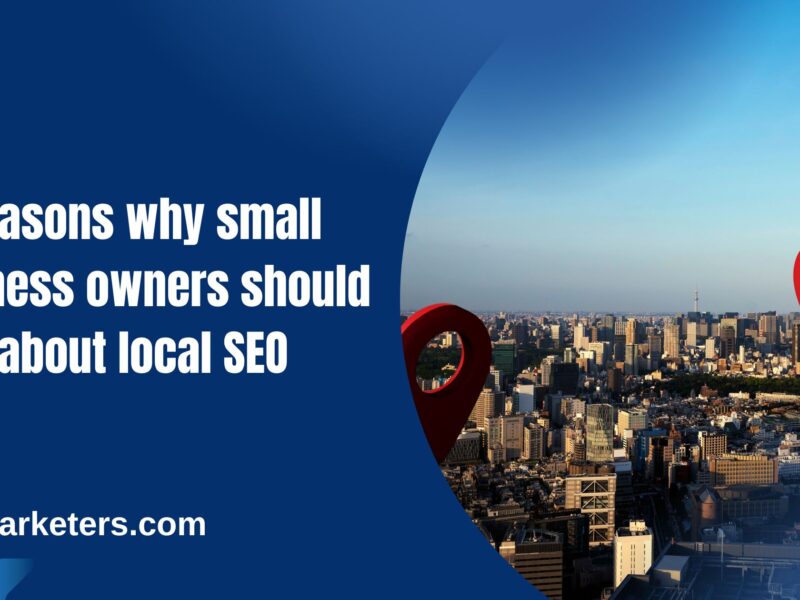Expanding your limo business beyond its local market is a strategic move that can significantly increase your customer base and revenue. However, attracting customers from multiple locations requires a well-thought-out approach. In this article, we’ll explore effective strategies to acquire customers from different areas and propel your limo business to new heights.
Read: Location page optimization for local SEO Template
As for location targeting: Targeting multiple locations is a little bit technical. So, if you have a main location + other locations, then it should follow a proper strategy to target all the locations and rank the business organically.
It’s recommended to have GMB profiles for each location, but still, if you have one you can target them from your website.
Location 1:
The website should focus on the main location and all the service pages should focus on the main location. If your business is located in Boston, it should be Bosston as the main location.
Then how can you focus on Shrewsbury, MA, Westborough, MA, and Ashland, MA?
There should be a page or a section on every single service page that page should have all the location names, something like this:
This is a basic strategy to target other locations.
But if you really wanted to get some good results and rank in those cities, then the powerful strategy is to create pages for locations.
Add a menu like this, and every single location should have a separate page. That page will optimize those specific location keywords with all of your service names.
Let’s say location page 1= “Limo Service in Shrewsbury, MA”
This page should have 500 – 700 words of content with all of your service names and 2,3 headings with keywords modifier.
The same strategy for location 2 and location 3 or as many as you want.
The conclusion is, your main service pages should focus on your main location only, for other locations you should have a new section with all the location names on every service page, and if you wanted to get good results and drive more traffic then create separate pages for each location, and add a new menu on the top named “service area” and add all the location pages under that menu.
This is the best strategy for multiple locations.
Then there’s more version of this strategy.
Let’s say you’re getting a few visits from the “Limo Service in Shrewsbury, MA” page. And you wanted to get more traffic from this page and the location. Then create 3 new pages and link back to that page. It’s called content cluster or “silo strategy” Those 3 pages should be hidden but will pass the juice to that location page and it will drive more traffic because it’s stronger than before.
Let’s say, “Corporate Limo Boston” is one of your location pages.
Now create 3 more pages
“Executive Limo Boston”
“Luxury Limo Services in Boston”
“Best Corporate Limo Rental in Boston”
All these 3 pages should have unique content and all 3 pages should link back to the main location page > ” Corporate Limo Boston“
Do the same thing for each location. It’s called content cluster or silo strategy.
Related: How to grow your limo business
How to Optimize Your Website’s Location Page Strategy
A well-optimized location page strategy on your website is essential for attracting local customers and improving your online visibility. Whether you have a single physical location or multiple branches, optimizing your location pages can significantly impact your local search rankings and drive more relevant traffic. In this post, we’ll explore effective strategies to optimize your website’s location pages for better visibility and increased customer engagement.
1. Create a Dedicated Location Page for Each Branch
If your business has multiple physical locations, create a dedicated location page for each branch on your website. Each page should contain accurate and up-to-date information about the address, contact details, operating hours, and unique offerings of that specific location. Avoid duplicating content across different location pages to maintain uniqueness and avoid potential SEO penalties.
2. Focus on Local Keywords
To rank higher in local search results, incorporate relevant local keywords into your location pages’ content. Research commonly used terms and phrases that customers in each area might use to find businesses like yours. Use these keywords naturally throughout the page, including in the page title, headings, meta tags, and content.
3. Optimize Meta Tags and Descriptions
Craft compelling meta titles and descriptions for each location page. These elements appear in search engine results and impact click-through rates. Include the location’s name and relevant keywords in the meta tags to entice users to click on your website.
4. Provide Detailed Location Information
Be sure to include detailed information about each location, such as a map with a pinpointed address, driving directions, and public transportation options. This information helps customers find your branches easily and enhances their user experience.
5. Utilize Schema Markup
Schema markup is a code that helps search engines understand the content and context of your web pages better. Implement local business schema markup on your location pages to provide search engines with essential details, such as the address, phone number, operating hours, and customer reviews. This markup can increase your chances of appearing in rich snippets and local search results.
6. Include Customer Reviews and Testimonials
Customer reviews and testimonials play a crucial role in building trust with potential customers. Display positive reviews and testimonials on each location page to showcase the quality of your services and encourage more visits. Respond to reviews, both positive and negative, to demonstrate your commitment to customer satisfaction.
7. Link to Local Directories and Maps
Link your location pages to relevant local directories and maps, such as Google My Business, Yelp, and Apple Maps. These authoritative sources validate your business’s location and contribute to your local search ranking.
8. Mobile Optimization
Ensure that your location pages are fully mobile-friendly. With the increasing use of smartphones for local searches, a mobile-responsive website is essential for providing a seamless user experience. Mobile optimization can also positively impact your search engine rankings.
9. Local Content Creation
Create unique and relevant content for each location page. Highlight local events, news, and community involvement to demonstrate your business’s connection to the area. This local content helps establish your authority in each location and appeals to the interests of local customers.
10. Track and Analyze Performance
Regularly monitor the performance of your location pages using web analytics tools. Analyze key metrics, such as page views, bounce rates, and conversions, to understand user behavior and identify areas for improvement. Use this data to refine your location page strategy and enhance your website’s overall effectiveness.
Optimizing your website’s location page strategy is vital for attracting local customers and improving your search engine rankings. By creating dedicated location pages, using relevant local keywords, and providing detailed location information, you can increase your website’s visibility in local search results. Implementing schema markup, mobile optimization, and local content creation further enhances your chances of success. Regularly analyze your location page performance to fine-tune your strategy and drive more traffic to your physical branches.



